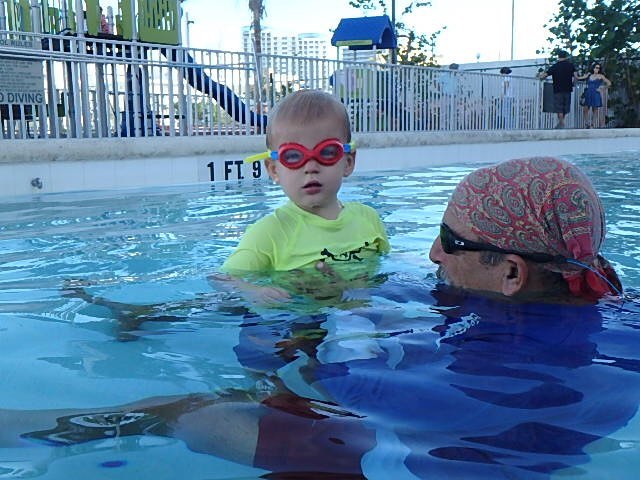Here in South Florida, water is all around us, it is a part of our lifestyle. Weekend plans typically include water activities on or near the water. Every day is pool season here in Florida! Knowing how to swim is not only a necessity but a lifesaving skill, especially for children. As Coach Robert Strauss always says, “swim for life, not for your life!” Aquatic education begins the moment a baby comes home from the hospital. This includes bath time and getting children comfortable to water and water being on the face while hearing the phonetics of “ppp,” like blowing a trumpet.
According to the Florida Health Department, Florida leads the country in drowning deaths of children ages 1-4 years. In 2013, Florida had the highest unintentional drowning rate in the nation for children ages 1–4 years with a drowning rate of 7.54 per 100,000 population.
Ideally it is recommended that children learn to swim by the time they are graduating kindergarten and entering first grade. It takes about 50-100 hours for a child to learn to swim, where each child learns at their own pace. Both Swim Gym and The H2Os (Helping Others Swim) Foundation are doing everything possible to minimize the statistics of drownings in South Florida, by teaching lifesaving skills to children and underprivileged children throughout the community. It is never too early to get a child into swimming lessons, even if it is a Baby Bonding class, the importance is getting used to and discovering the movements in the water.

The American Red Cross believes that one way to help reduce drowning accidents among children ages 5 through 12 is to teach children about safe behavior in, on and around the water through a series of 11 rhyming rules/videos in Longfellow’s WHALE (Water Habits Are Learned Early) Tales. These rules are intended to prepare children in case of an emergency and include: Swim as a Pair Near a Lifeguard’s Chair, Be Cool Follow the Rules, Look Before You Leap, Think So You Don’t Sink, Reach or Throw Don’t Go, Don’t Just Pack it Wear Your Life Jacket, Think Twice Before Going Near Cold or Ice, Know About Boating Before You Go Floating, Too Much Sun is No Fun, In Your House and in Your Yard Watch for Water Be on Guard, and lastly Wave, Tide or Ride, Follow the Guide. It is a good idea to review these with your children and talk about the importance of not going near or in the water without adult supervision there.
Below are some tips for outside and inside the pool are to keep children safe and alive. Never—not even for a second—leave children alone or in the supervision of another child, while in or near open bodies of water.
Outside the pool:
• Physical barriers- Child proof locks on doors, fence around the pool with self -latching/closing gates
• Designated water watcher – Never assume everyone is watching the pool, have someone always actively watching the pool.
• Keep pool deck clear of toys- if a ball falls into the pool it is tempting for a child to attempt to reach out and grab
• Learn CPR- life or death can happen within minutes
In the pool:
• Keep child’s arm length distance
• Buddy System
• Encourage kids to stay where they can stand
• Practice jumping in and exiting out of the pool (with adult help).

